Unusual Phenomena
Get ready to have your mind blown by some absolutely incredible spectacles!
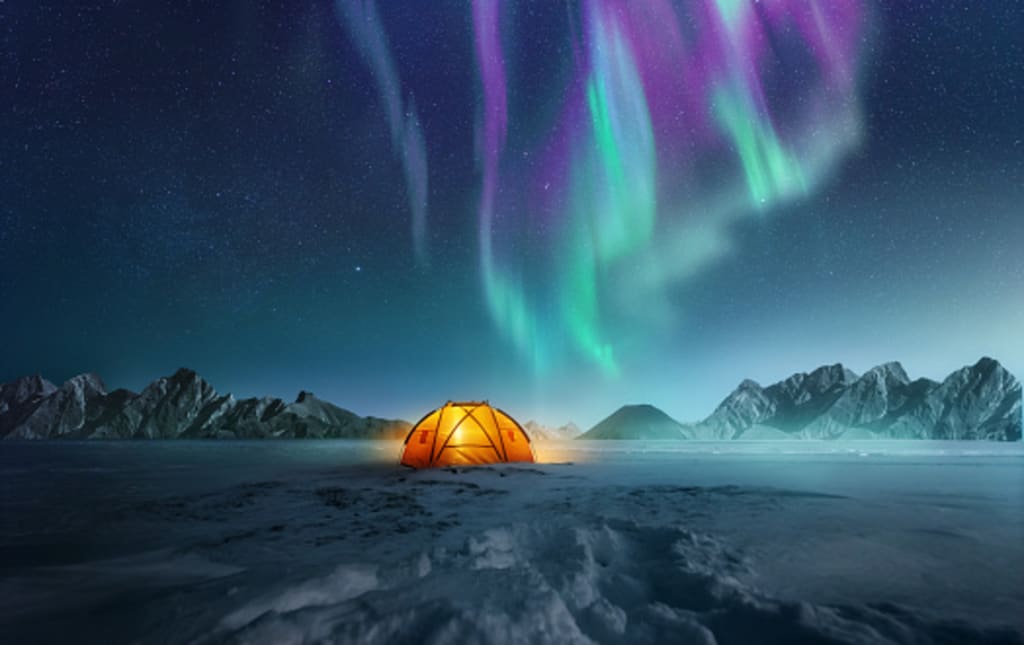
From spectacular seasonal displays to mysterious natural occurrences, the world is full of some truly extraordinary phenomena. Here is a list of 12 unusual phenomena that will astound you:
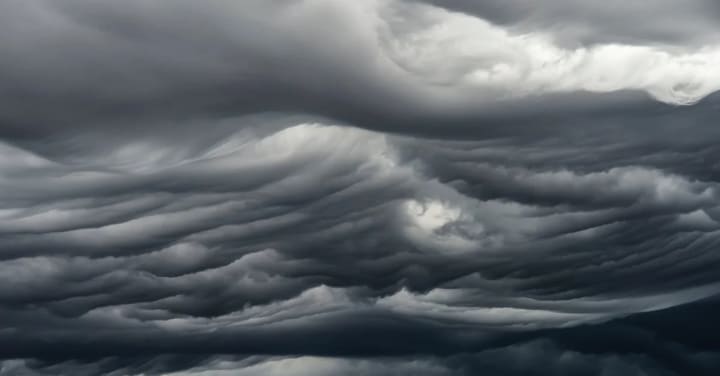
Have you ever seen something so rare that it feels like winning the lottery? Well, get ready to feel lucky because witnessing the phenomenon of Asperatus clouds is extremely rare. These clouds managed to avoid classification until 2009, making them even more mysterious. They look dark and stormy, but in most cases, they disappear quickly without any storm. These clouds are like a blink-and-you'll-missy kind of thing. Asperatus clouds are formed when colliding air masses or turbulent winds whip up the bottoms of cloud layers, creating breathtaking and unique shapes.
So, keep an eye out for these elusive and stunning clouds! You may just get lucky and spot one of these beauties.
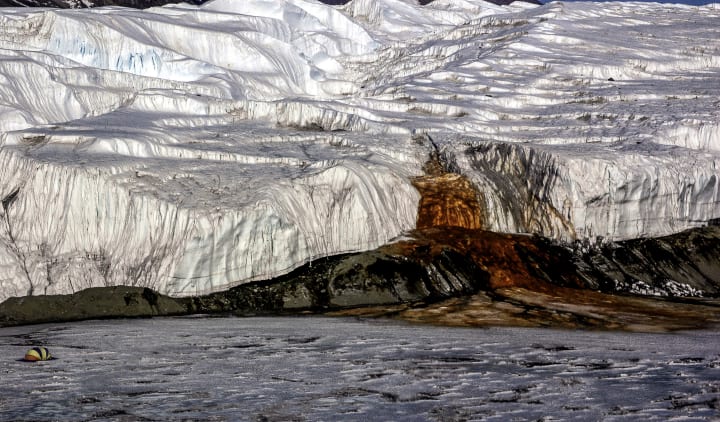
Deep within the icy heart of Antarctica lies a mystery that will leave you breathless. Blood Falls, a strange and eerie waterfall, flows with deep red water that stands out against the pristine white surroundings. What causes this phenomenon has been a topic of debate for years, but scientists have finally uncovered the truth - it's all thanks to iron-rich saltwater. This mysterious waterfall actually flows with a combination of iron-rich saltwater and liquid ice. This mix of elements creates an eerily unique blood-red colour, and when combined with the stark white of the surrounding ice, it creates a stunning contrast that is both beautiful and mesmerizing.
So if you ever find yourself in Antarctica, make sure to take the time to visit Blood Falls as it will surely be a sight that you'll never forget!

Have you ever heard of Brinicles? These bad boys are like icicles on steroids. They form when very cold salt water meets the right set of conditions and creates these long, hollow stalactites. Brinicles are incredibly strong, and can even freeze fish and other sea creatures in their path. So how do brinicles form? Cold water is denser than warm water, so when it meets a warmer layer of seawater, it sinks and begins to freeze. This freezing process extends down from the surface of the sea and creates this unique phenomenon.
So if you're ever in a position to catch a glimpse of brinicles, make sure you take some time to appreciate them!
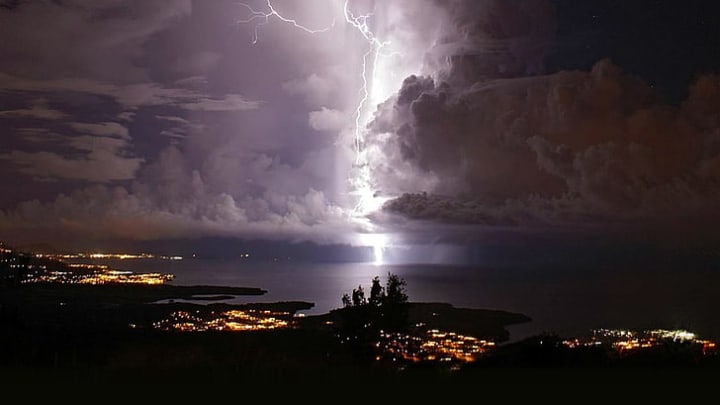
Feeling bummed because your outing got rained out? Consider yourself lucky it's not the Catatumbo - the longest lightning storm in the world! This epic storm happens over Lake Maracaibo in Venezuela, towering above your average thunderstorm. And get this - it lasts for a whopping 140 to 160 nights a year, producing 40 lightning flashes per minute for a full nine hours each day.
Lightning doesn't strike twice in the same spot? The Catatumbo begs to differ, as it gathers in the same place year after year. Don't forget your raincoat if you're planning a trip to Venezuela!
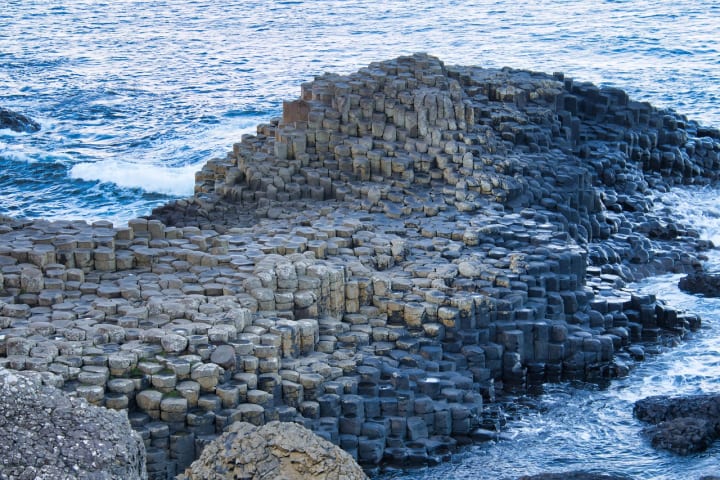
Are you feeling adventurous enough for a stairway of epic proportions? Located on the dramatic North Antrim coast, the Giant's Causeway is one of Ireland's most iconic landmarks. Don't be fooled by its man-made appearance, this jaw-dropping formation is actually a natural wonder, known as Columnnar Basalt. Its hexagonal columns, formed by volcanic activity, will leave you in awe.
Columnar Basalt is an unusual geological phenomenon that occurs when basalt lava cools and contracts. As lava cools in a heartbeat, it contracts and creates a mesmerizing web of cracks on the surface of the newborn rock. It forms into hexagonal columns, often with a vertical orientation and a uniform size. The columns usually form in clusters of two to seven but can range from single columns up to 50 or more. It's a must-see if you're looking for a unique experience in nature. The formation extends for miles and includes more than 40,000 hexagonal basalt columns.
You can walk along the shoreline and explore its unique formations, or climb up the stairs that were carved by the sea. It's as if the earth itself is a canvas, and these fractures are its masterpieces. Trust us, this is one stairway you don't want to miss!
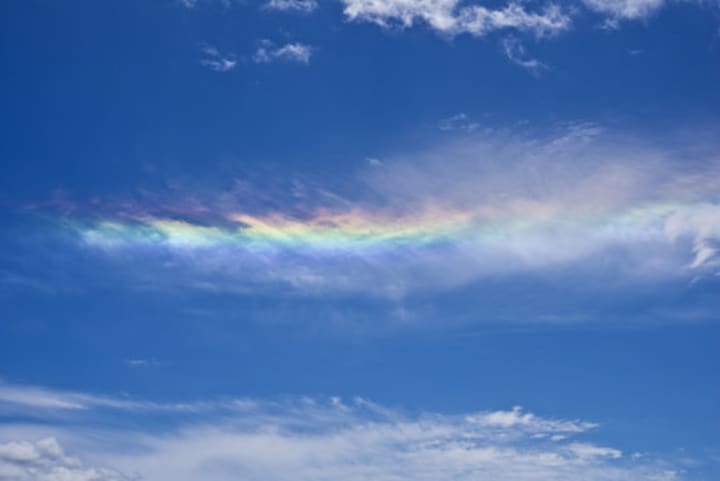
Fire rainbows are an infrequent and unusual phenomenon caused by the reflection of sunlight off ice crystals in cirrus clouds. Scientists call them the Circumhorizontal Arc, but we prefer fire rainbows. The sun must be at least 58° above the horizon for the light to be reflected into a rainbow-like arc across the sky. That's why the closer you are to the Equator, the more likely you'll see one of these bad boys. While fire rainbows may look like regular rainbows, they appear horizontally instead of in a bow shape. The best part? No rain required!
Los Angeles residents get to enjoy them for six whole months, while poor Londoners only get a two-month window. These fire rainbows appear in many different shapes and sizes but always contain vibrant colours like pink, orange, yellow, and sometimes even green. Don't miss out on these fiery wonders!
Have you ever wandered through a forest during the summer and stumbled upon a faint eerie glow? Well, that's Foxfire - a mystical and slightly spooky phenomenon that's actually quite simple. Foxfire is an unusual phenomenon that occurs when mushrooms growing on dead wood emit a faint blue-green glow in the dark. This phenomenon has been observed since ancient times and is caused by bioluminescent fungi. The most common species of these fungi are Armillaria Mellea, commonly known as Honey Fungus, and Mycena Chlorophos, also known as the Green-Glow Mushroom.
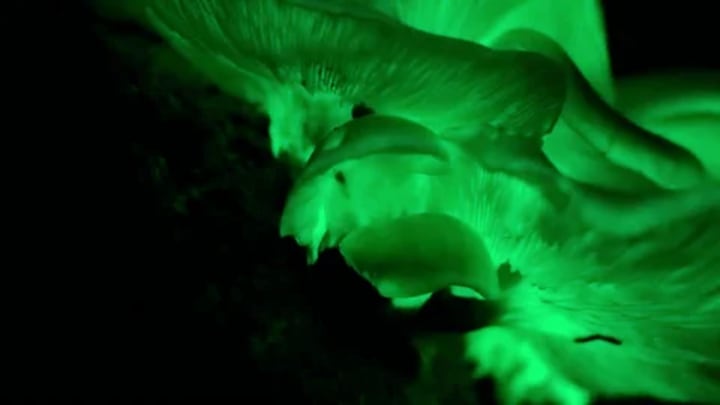
Foxfire is a fascinating natural phenomenon that has captivated our imaginations for centuries. Not only does it have a mysterious and eerie beauty, but it also helps scientists better understand the relationship between fungi and plants. So, next time you're looking to witness this natural wonder, head to the tropics where damp forests encourage the growth of these mushrooms. But here's a pro tip: hunt for them during the wettest season and steer clear of artificial light sources to increase your chances of discovering these magical fungi.
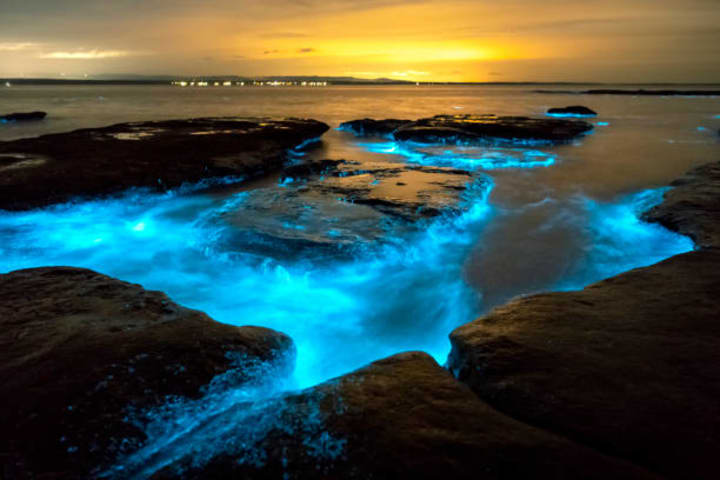
The beach is glowing and it's not an illusion. This breathtaking phenomenon can be witnessed all around the globe in various bodies of water, such as the Mediterranean, Caribbean, and Gulf of Mexico. It can also be seen in the waters near Hawaii and California. The most common cause of glowing seawater is bioluminescence, which is caused by a type of plankton known as dinoflagellates. These organisms contain chemicals called luciferin and luciferase, which create light when they interact with each other. They emit a mesmerizing light when they're disturbed by the movements of waves and currents.
These little guys usually give off a radiant blue hue, but some can even glow green, red, or orange, turning the ocean into a giant, swirling lava lamp! However, if you happen upon this incredible sight during the day, you may be slightly grossed out by the thick, visible layer of plankton near the surface of the water. But let's not focus on that - let's bask in the beauty of nature's light show!
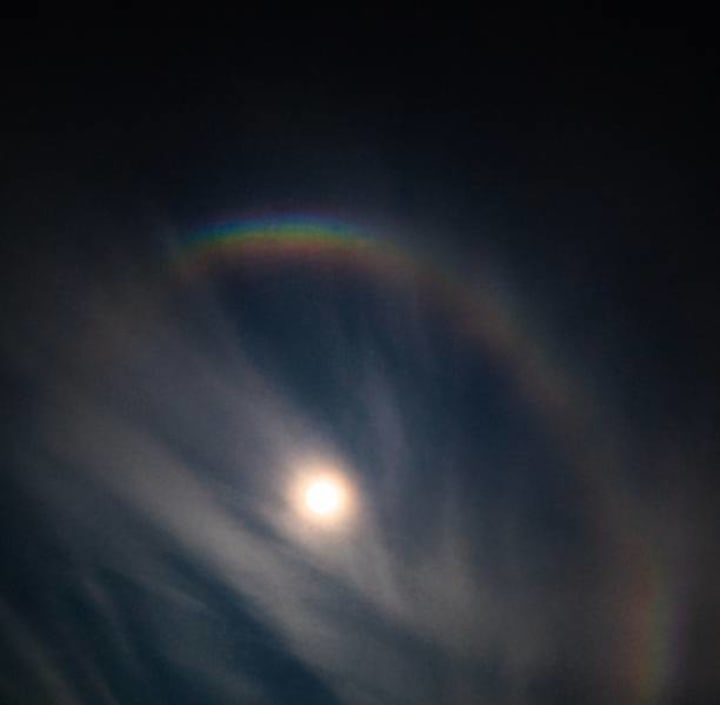
A moonbow, or lunar rainbow, is an unusual phenomenon that occurs when the sun is below the horizon and the moonlight reflects off of moisture in the air. The result is a faint rainbow-like arc illuminated by moonlight instead of sunlight. Moonbows are considered to be much rarer than regular rainbows as they require specific conditions to form. These conditions include a full moon (or nearly full moon), clear skies, and high humidity. Moonbows can be seen in many places around the world but are especially common in Hawaii, where they are known as "Menehune rainbows".
Experts say that the size of the water droplets in the air affects the brightness of the colours. So, if you're lucky enough to see a moonbow, you better hope those water droplets are just the right size. If you're itching to see a moonbow for yourself, make sure to check the moon's phase and the weather. The moon needs to be full and low in the sky, and there shouldn't be any pesky clouds in the way. In the U.S., some of the best places to spot moonbows are next to waterfalls, like Niagara Falls or Yosemite National Park. So, grab your binocular and go on a moonbow hunt!
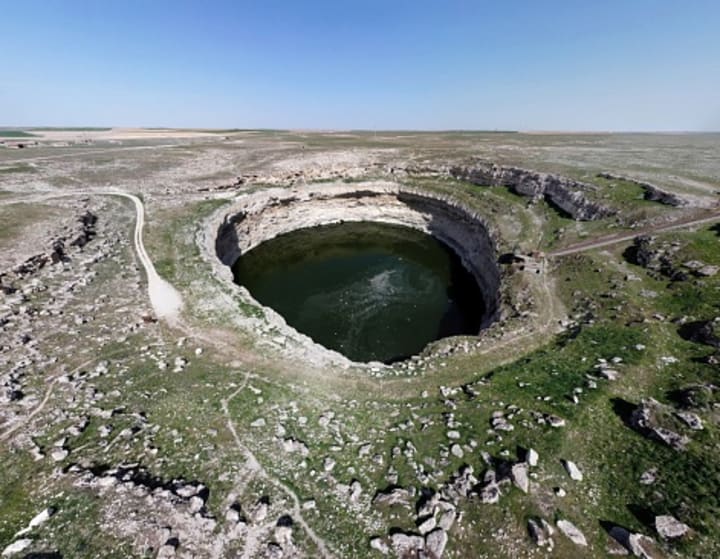
Watch out, folks! There's a new danger lurking beneath our feet, and it's even scarier than brinicles. Sinkholes are one of the most unusual and unpredictable phenomena that can occur in nature. They are formed when the surface layer of soil or rock is weakened, allowing it to collapse and form a depression or hole in the ground. Sinkholes can range from just a few feet wide to large gaping chasms that can swallow entire buildings, cars, and people.
Sinkholes form in a variety of different ways, but the most common cause is water erosion. When water turns acidic and eats away at soft rocks like gypsum and limestone, creating massive underground cavernous spaces beneath the surface, it creates a void that eventually collapses and forms a sinkhole. Sinkholes can also form as a result of human activity like mining or quarrying, as well as natural processes like earthquakes or landslides.
They can open up anywhere, even under your house! Just ask the poor soul whose van was swallowed up by a sinkhole in New York City in the summer of 2022. And that's not even the worst of it - locals reported over 4,000 sinkholes all over the city! These things are popping up all over the world, without warning or prediction. Picture this: one minute you're walking down the street, and the next, you're plummeting into a giant hole in the ground. Yikes! It's enough that groundwater can dry up and create cavernous spaces that collapse under the slightest pressure. So be on the lookout, folks, and don't say we didn't warn you!
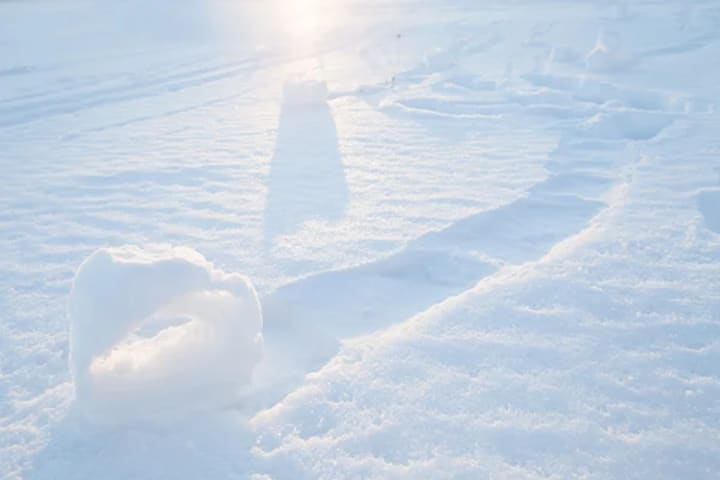
Have you ever laid eyes on a snow roller? It's like a handmade snow doughnut, but it's no ordinary treat - it's a natural phenomenon that appears in winter, typically caused by strong winds. First, there needs to be a thick layer of fresh snow covering a layer of ice. Then, when the temperature and wind speed are just right, the magic happens. The loose snow starts rolling and picks up more and more snow, forming a large and impressive snow roller. It's like a work of art created by Mother Nature herself! These rare and precise conditions create a spectacle that's worth marvelling at.
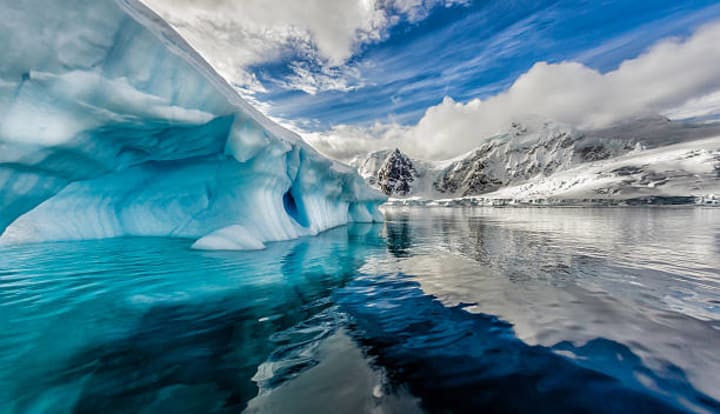
How about a striped iceberg? It's a rare and spectacular sight mainly found in the Antarctic region. These icebergs have crazy colourful stripes that pop against the icy blues of the Arctic. But, wait, there's more to these stripes than meets the eye. Some believe they're caused by the movement of water and sediment near the iceberg, while others think it's due to melting and refreezing cycles. But, the truth is, these stripes are formed as water melts and freezes on the iceberg's surface, trapping dirt and minerals and creating a rainbow of colours.
And those blue stripes? They're formed when water freezes so quickly that no air bubbles have a chance to form. And if an iceberg takes a dip in the ocean, algae can create yellow or green stripes. Who knew icebergs could be so fashionable?
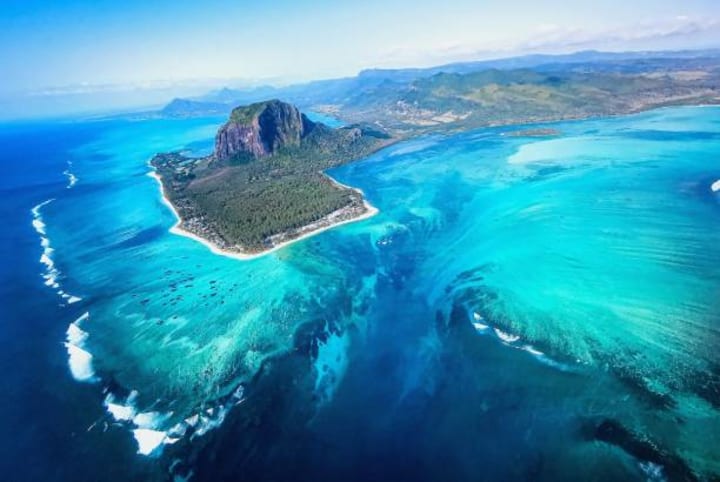
This optical illusion occurs when water from one ocean or sea cascades over a steep ledge below another body of water. The effect is particularly spectacular in Mauritius, where an underwater waterfall appears to pour into the Indian Ocean. Underwater waterfalls are one of the most unusual and mesmerizing phenomena on our planet. Despite the name, they are not actually waterfalls in the traditional sense. Rather, they are an optical illusion created by sand, silt, rocks and other debris cascading over a steep underwater ledge between two bodies of water at different depths.
The most famous example of an underwater waterfall can be found in Mauritius, where a deep-blue waterfall appears to flow from the Indian Ocean into the depths of the sea. Although this phenomenon is visually stunning, it is also incredibly dangerous and can be deadly if swimmers or divers get too close.
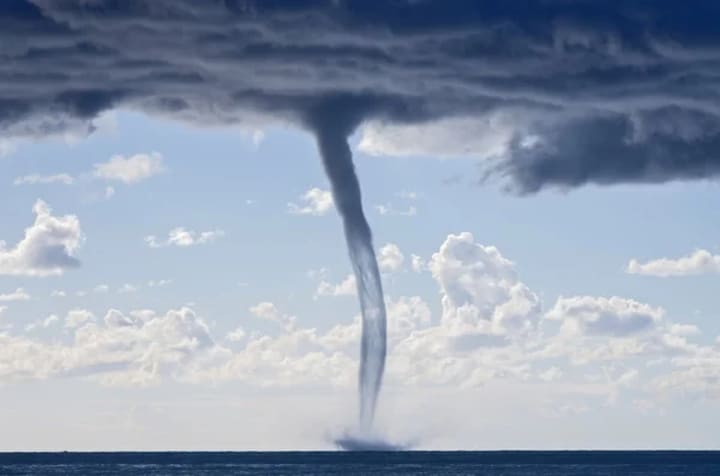
Sea tornadoes? Nope, we're not talking about a mythical creature. They're called waterspouts, and they're as real as it gets! Imagine a funnel-shaped cloud reaching down from the stormy skies to the warm ocean waters. Waterspouts are small rotating tornadoes made up of air and water droplets. They're dramatic weather phenomena that typically occur near hurricanes in tropical or subtropical climates. But don't worry, most waterspouts don't suck up water! Instead, they're weak rotating columns of air hovering above the surface.
The most common type is the fair-weather waterspouts, which are visible from the shore and can be as strong as an EF2 tornado with wind speeds up to 113 mph! These little guys often form on still days and are accompanied by little or no rain. Waterspouts can last anywhere from a few minutes to over an hour, and some even start as dry land tornadoes before travelling towards a body of water. Mother Nature never ceases to amaze us with her incredible creations!

The Earth is filled with a variety of incredible and unique natural phenomena. Have you ever heard of the glorious Aurora Borealis, otherwise known as the Northern Lights? This phenomenon can be seen in the night sky in certain regions of the world, dazzling with its vibrant colours. The display is created when particles from the sun's atmosphere collide with atoms in our planet's atmosphere. Depending on where you are located, the colours range from green to blue and even pink. Witnessing this beautiful light show is a reminder of the wonders of nature that are all around us. Have you ever seen one of these wonders?
About the Creator
Juan Lucas Edwards
I'm eager to unleash my discoveries upon the world - ready to spill the beans on anything and everything that tickles my fancy!



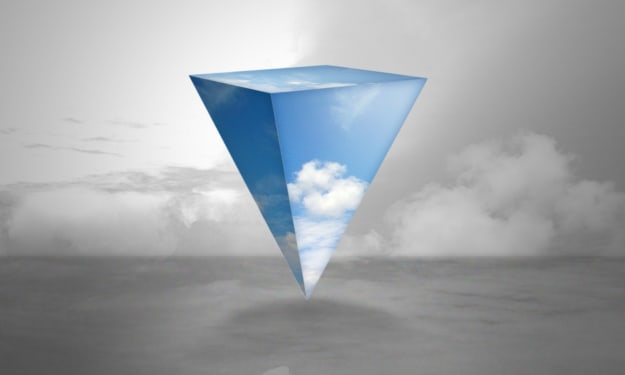


Comments
There are no comments for this story
Be the first to respond and start the conversation.